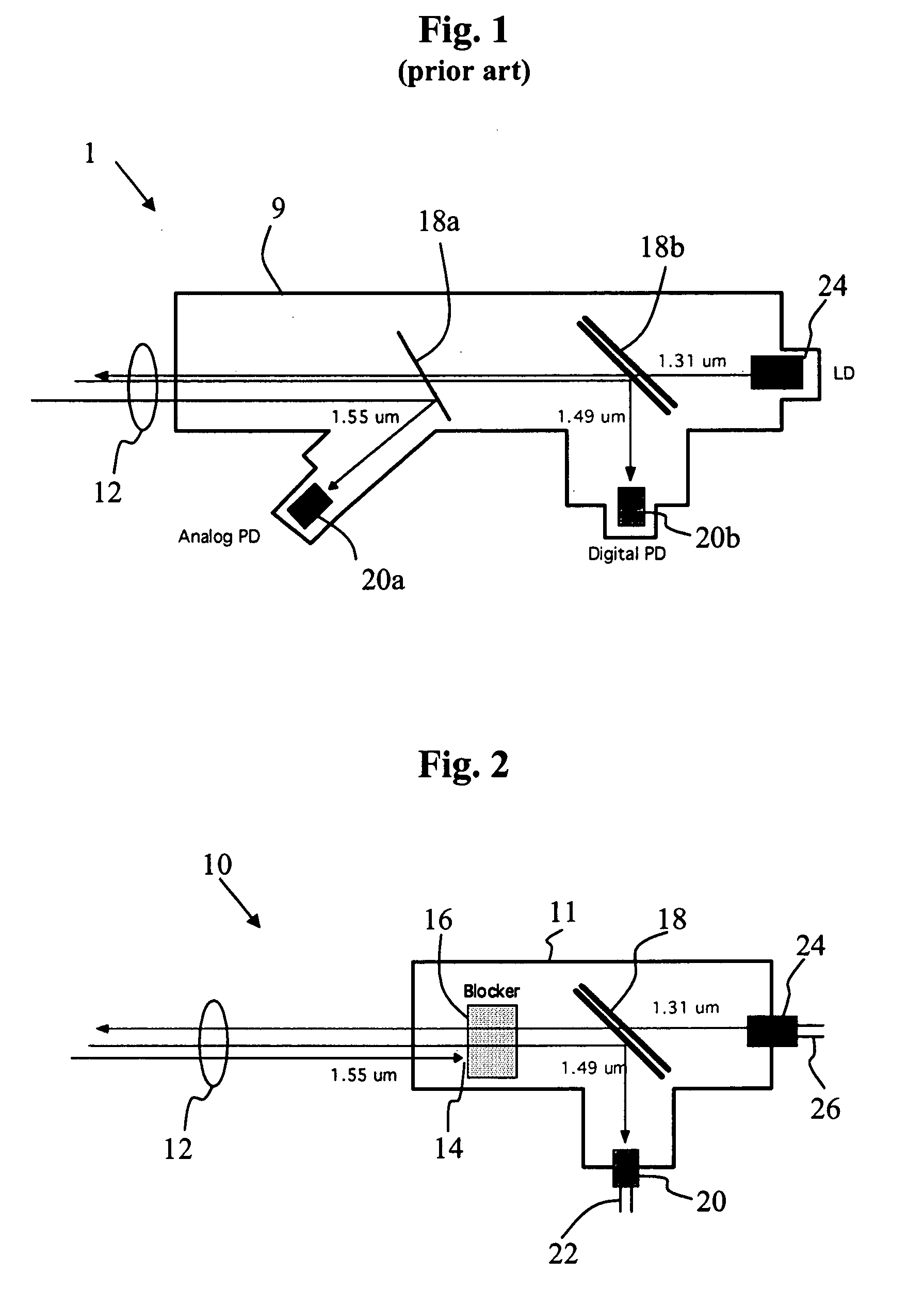Multi-wavelength, bi-directional optical multiplexer
a multi-wavelength, bi-directional technology, applied in multiplex communication, electromagnetic repeaters, instruments, etc., can solve the problems of difficult implementation in practical and cost-effective ways, many customers crave even greater bandwidth, etc., to achieve low cost, high level of skill, and easy and economical implementation
- Summary
- Abstract
- Description
- Claims
- Application Information
AI Technical Summary
Benefits of technology
Problems solved by technology
Method used
Image
Examples
example 1
Testing of an Optical Network Unit
[0035]An ONU-A optical network unit 202 constructed in accordance with the present invention is tested using a system 200 shown schematically in FIG. 5. A video signal is prepared using a video subcarrier generated by a conventional VCR 204 and fed through a wideband amplifier 206. The electrical signal drives a high power laser 208 that provides an analog video optical signal having a power of about 6.5 dBm at a wavelength λ3 of 1.55 μm and an 80% modulation in video fiber 210. A thermoelectrically cooled, distributed feedback laser is used. A data signal is generated using a standard laboratory digital word generator 212 operating at a rate of about 155 Mb / s and connected to a laser light module 214 to produce a digital optical signal at λ2=1.49 μm. The signal is fed through a single mode optical fiber 216 either 10 or 20 km long and then through a conventional 16-way optical splitter 218 and then through a variable optical attenuator 220. The low...
example 2
Testing of an Optical Network Unit with Video Output
[0036]An ONU-B optical network unit 203 is constructed in accordance with the present invention and then tested using a system 201 shown schematically in FIG. 6. A combined optical signal is prepared using the same system employed in Example 1 and having the characteristics described therein. The combined optical signal is fed to a WDM mirror-based video splitter 72 that directs a portion of the 1.55 μm component through video output fiber 76 to an optical video receiver 78 and a video amplifier 258 connected to a television set 260. The integrity of the video signal is confirmed by observation of the screen image reproduced on the television set. A portion of the incident signal is also routed by the video splitter 72 through data fiber 74 to a bi-directional multiplexer 82 of the ONU-A type. The data output of the multiplexer 82 is connected to a BER counter 228 that demonstrates the integrity of the digital data as evidenced by ...
PUM
 Login to View More
Login to View More Abstract
Description
Claims
Application Information
 Login to View More
Login to View More - R&D
- Intellectual Property
- Life Sciences
- Materials
- Tech Scout
- Unparalleled Data Quality
- Higher Quality Content
- 60% Fewer Hallucinations
Browse by: Latest US Patents, China's latest patents, Technical Efficacy Thesaurus, Application Domain, Technology Topic, Popular Technical Reports.
© 2025 PatSnap. All rights reserved.Legal|Privacy policy|Modern Slavery Act Transparency Statement|Sitemap|About US| Contact US: help@patsnap.com



